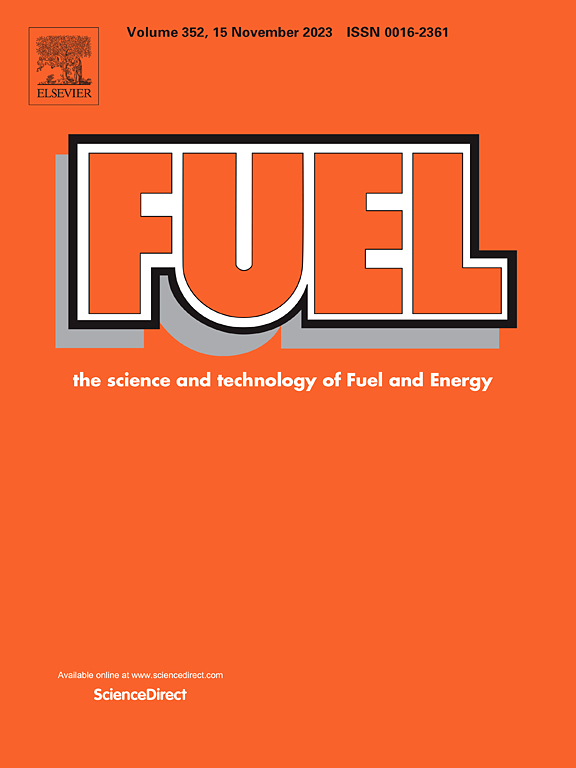Numerical analysis of quenching distance in laminar premixed hydrogen and methane flames
IF 7.5
1区 工程技术
Q2 ENERGY & FUELS
引用次数: 0
Abstract
The quenching behavior of laminar premixed hydrogen-air and methane-air flames is studied in two-dimensional configurations with detailed chemistry. Quenching distances are determined by simulating an initially stationary flame and then decreasing the inlet speed, allowing upstream flame propagation in a converging duct. The quenching distance is then defined as the distance between the cold surfaces where the flame extinguishes due to heat loss to the walls. The results for methane-air and hydrogen-air mixtures at various equivalence ratios are compared with experimental data, showing good agreement. The effects of flow inlet velocity, geometry, and wall temperature on quenching distance are investigated. The quenching distance is found to be sensitive to the inlet speed and decreases with decreasing inlet speed. The quenching distance is shown to decrease linearly with increasing wall temperature in hydrogen-air flames. In addition, the quenching distance depends on the geometry of the setup. Slit and annular ducts result in similar quenching distances, whereas circular ducts have higher quenching distances compared to the others. The study highlights the importance of considering these factors in burner design and flashback prevention devices.
氢甲烷层流预混火焰淬火距离的数值分析
在二维结构中详细研究了层流预混氢-空气和甲烷-空气火焰的猝灭行为。通过模拟最初静止的火焰,然后降低入口速度,使上游火焰在收敛管道中传播来确定淬火距离。淬火距离定义为冷表面之间的距离,其中火焰由于热损失到壁上而熄灭。对不同当量比下的甲烷-空气和氢-空气混合物的计算结果与实验数据进行了比较,结果吻合较好。研究了进口速度、几何形状和壁面温度对淬火距离的影响。淬火距离对进口速度很敏感,并随着进口速度的减小而减小。在氢气-空气火焰中,淬火距离随壁面温度的升高而线性减小。此外,淬火距离取决于安装的几何形状。狭缝管和环形管的淬火距离相似,而圆形管的淬火距离相对较高。该研究强调了在燃烧器设计和防止闪回装置中考虑这些因素的重要性。
本文章由计算机程序翻译,如有差异,请以英文原文为准。
求助全文
约1分钟内获得全文
求助全文
来源期刊

Fuel
工程技术-工程:化工
CiteScore
12.80
自引率
20.30%
发文量
3506
审稿时长
64 days
期刊介绍:
The exploration of energy sources remains a critical matter of study. For the past nine decades, fuel has consistently held the forefront in primary research efforts within the field of energy science. This area of investigation encompasses a wide range of subjects, with a particular emphasis on emerging concerns like environmental factors and pollution.
 求助内容:
求助内容: 应助结果提醒方式:
应助结果提醒方式:


